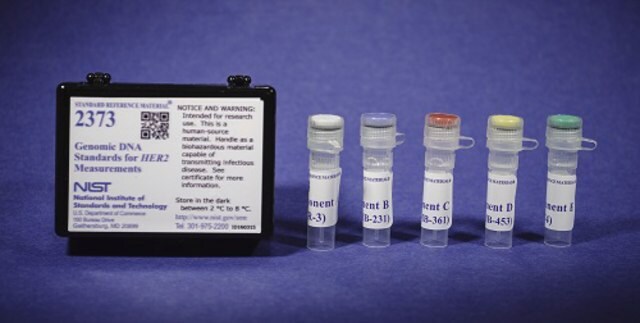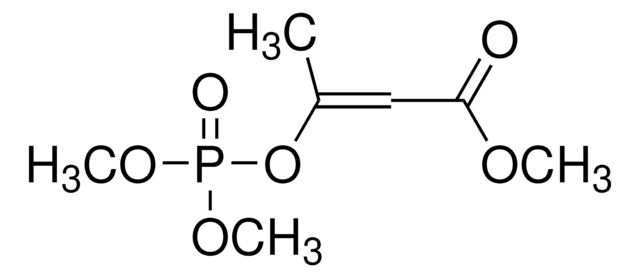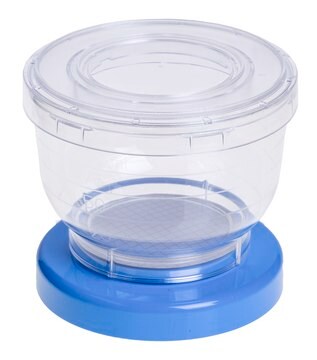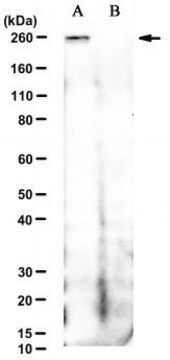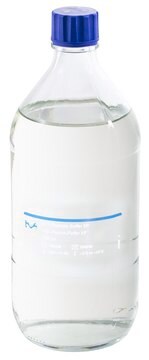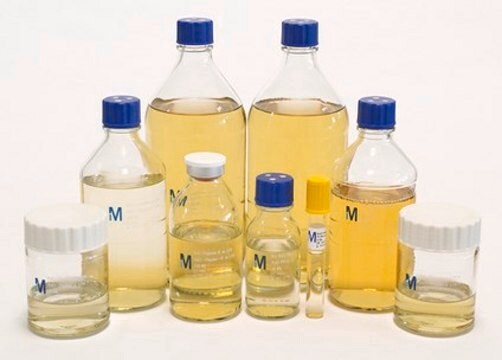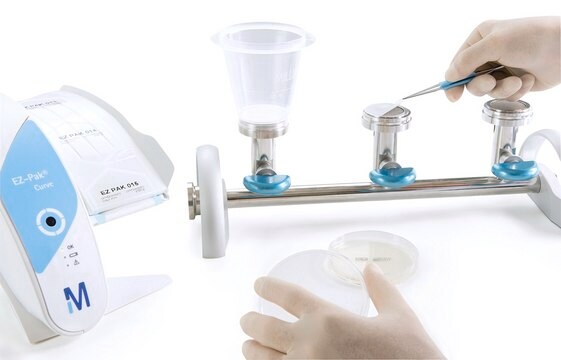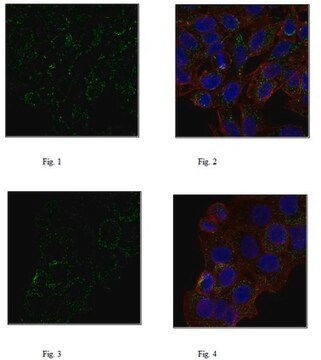MABF2009
Anti-IL-17A/CTLA8 Antibody, clone MM17F3
Synonim(y):
Interleukina-17A; antygen 8 związany z cytotoksycznymi limfocytami T
About This Item
Polecane produkty
pochodzenie biologiczne
mouse
Poziom jakości
forma przeciwciała
purified antibody
rodzaj przeciwciała
primary antibodies
klon
MM17F3 or MM17AF3, monoclonal
masa cząsteczkowa
calculated mol wt 17.49 kDa
observed mol wt ~18 kDa
oczyszczone przez
using protein G
reaktywność gatunkowa
mouse
opakowanie
antibody small pack of 100 μg
metody
ELISA: suitable
flow cytometry: suitable
immunohistochemistry: suitable
inhibition assay: suitable
neutralization: suitable
western blot: suitable
izotyp
IgG1κ
sekwencja epitopowa
Unknown
numer dostępu Protein ID
numer dostępu UniProt
temp. przechowywania
2-8°C
docelowa modyfikacja potranslacyjna
unmodified
informacje o genach
mouse ... Il17A(16171)
Opis ogólny
Specyficzność
Immunogen
Zastosowanie
Oceniane metodą Western Blotting z rekombinowaną mysią IL-17A.
Analiza Western Blotting (WB): Rozcieńczenie 1:20 000 tego przeciwciała wykryło rekombinowaną mysią IL-17A.
Testowane zastosowania
Neutralizujące: Reprezentatywna partia neutralizowała aktywność Interleukiny-17A w zastosowaniu neutralizującym (Galicia, G., et al. (2009). J Clin Immunol.;29(4):426-33; Kelchtermans, H., et al. (2009). Arthritis Res Ther.;11(4):R122).
Analiza cytometrii przepływowej: Reprezentatywna partia wykryła Interleukinę-17A w aplikacji Cytometrii Przepływowej (Lo Re, S., et al. (2010). J Immunol. 184(11):6367-77; Chen, X., et al. (2010). Biol Blood Marrow Transplant. 16(1):123-8).
Analiza ELISA: Reprezentatywna partia wykryła Interleukinę-17A w aplikacji ELISA (Uyttenhove, C., et al. (2006). Eur J Immunol. 36(11):2868-74; Lemaire, M.M., et al. (2011). J Immunol. 187(7):3530-7).
Zastosowania immunohistochemiczne: Reprezentatywna partia wykryła IL-17A/CTLA8 w zastosowaniu immunohistochemicznym (Chen, X., et al. (2010). Biol Blood Marrow Transplant. 16(1):123-8).
Inhibition Assay: Reprezentatywna partia hamowała indukcję IL-6 przez IL-17A w linii komórek fibroblastycznych C11D. (Uyttenhove, C., et al. (2006). Eur J Immunol.;36(11):2868-74).
Analiza ELISA: Różne rozcieńczenia tego przeciwciała wykryły rekombinowane mysie białko IL-17A.
Uwaga: Rzeczywiste optymalne rozcieńczenia robocze muszą być określone przez użytkownika końcowego jako próbki, a warunki eksperymentalne mogą się różnić w zależności od użytkownika końcowego.
Postać fizyczna
Rekonstytucja
Przechowywanie i stabilność
Inne uwagi
Oświadczenie o zrzeczeniu się odpowiedzialności
Nie możesz znaleźć właściwego produktu?
Wypróbuj nasz Narzędzie selektora produktów.
Kod klasy składowania
12 - Non Combustible Liquids
Klasa zagrożenia wodnego (WGK)
WGK 1
Temperatura zapłonu (°F)
Not applicable
Temperatura zapłonu (°C)
Not applicable
Certyfikaty analizy (CoA)
Poszukaj Certyfikaty analizy (CoA), wpisując numer partii/serii produktów. Numery serii i partii można znaleźć na etykiecie produktu po słowach „seria” lub „partia”.
Masz już ten produkt?
Dokumenty związane z niedawno zakupionymi produktami zostały zamieszczone w Bibliotece dokumentów.
Nasz zespół naukowców ma doświadczenie we wszystkich obszarach badań, w tym w naukach przyrodniczych, materiałoznawstwie, syntezie chemicznej, chromatografii, analityce i wielu innych dziedzinach.
Skontaktuj się z zespołem ds. pomocy technicznej